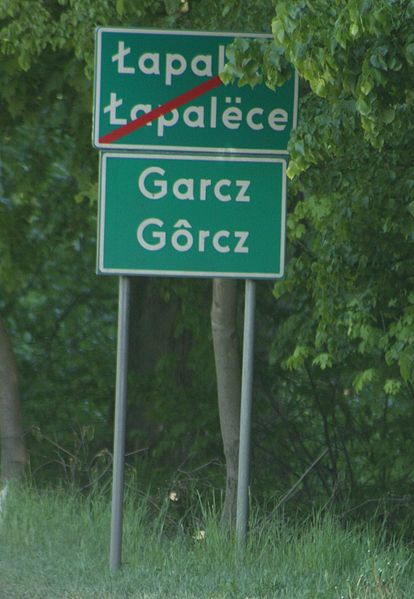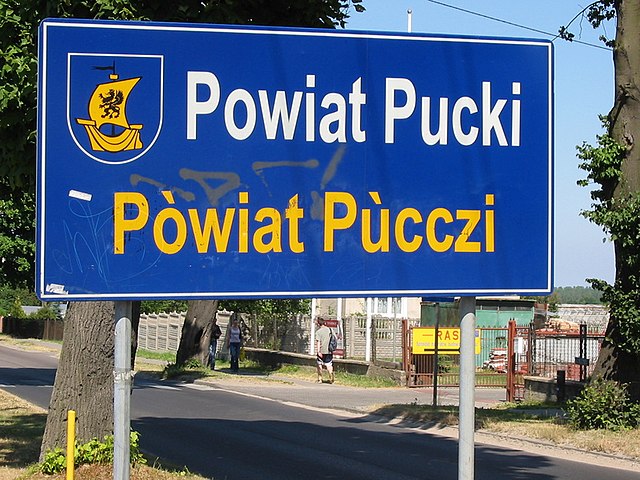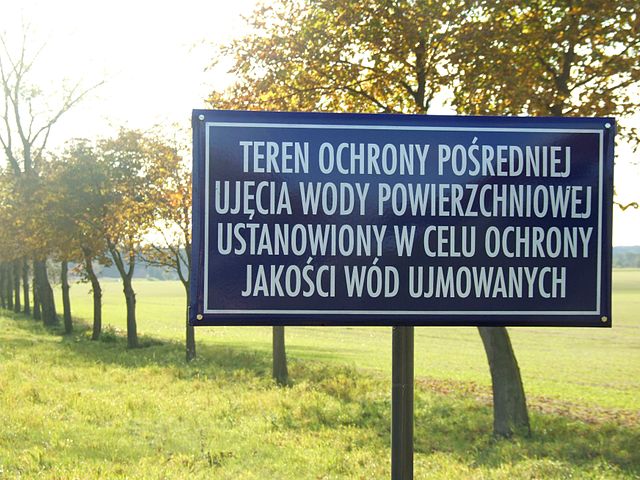Kashubian or Cassubian is a West Slavic language belonging to the Lechitic subgroup along with Polish and Silesian. Although often classified as a language in its own right, it is sometimes viewed as a dialect of Polish.
Two bilingual signs in Garcz in Kashubia with the Polish name above and the Kashubian name below
Bilingual sign in Polish and Kashubian in Pogórze, Puck County, Poland, on road from Gdynia to Rewa
Church of the Pater Noster, Mount of Olives, Jerusalem. Lord's Prayer in Kashubian
Polish is a West Slavic language of the Lechitic group within the Indo-European language family written in the Latin script. It is primarily spoken in Poland and serves as the official language of the country, as well as the language of the Polish diaspora around the world. In 2023, there were over 40.6 million Polish native speakers. It ranks as the sixth most-spoken among languages of the European Union. Polish is subdivided into regional dialects and maintains strict T–V distinction pronouns, honorifics, and various forms of formalities when addressing individuals.
The oldest printed text in Polish – Statuta synodalia Episcoporum Wratislaviensis printed in 1475 in Wrocław by Kasper Elyan.
A formal-tone informative sign in Polish, with a composition of vowels and consonants and a mixture of long, medium and short syllables
The Jakub Wujek Bible in Polish, 1599 print. The letters á and é were subsequently abolished, but survive in Czech.
Common handbag in Polish is called a torba, a word directly derived from the Turkish language. Turkish loanwords are common as Poland bordered the Ottoman Empire for centuries.[failed verification]







